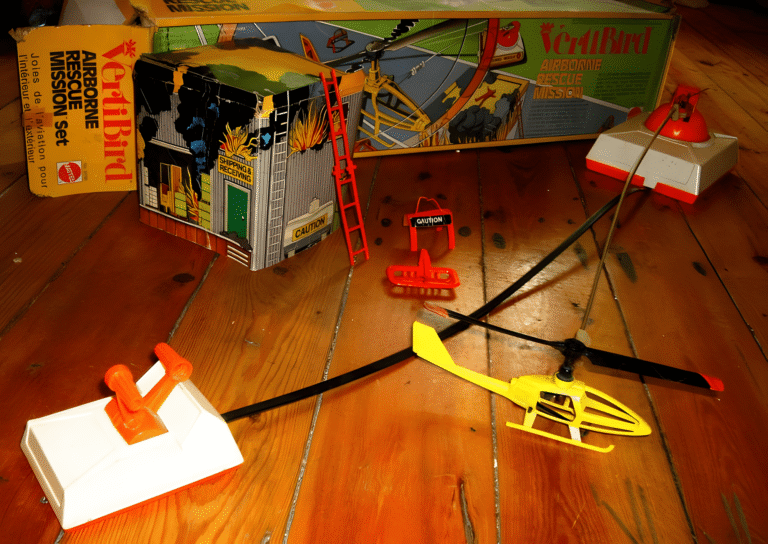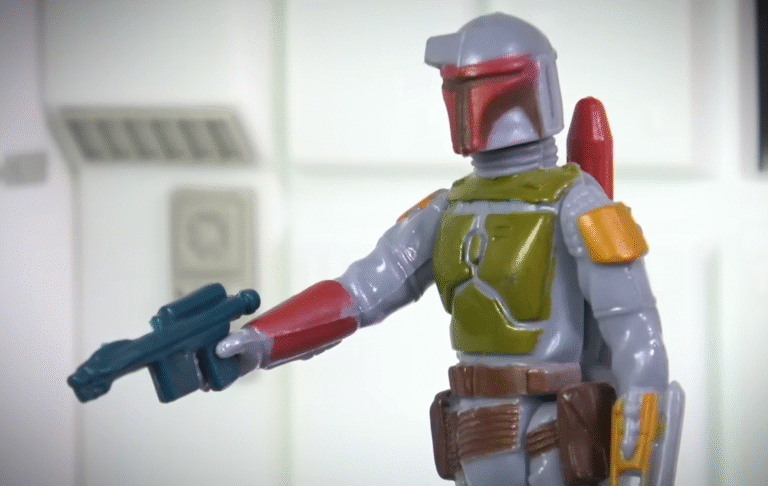Before phones and tablets took over, kids in the 60s had toys that felt like magic. Back then, your world came alive with Creepy Crawlers, Lite-Brite, and Johnny Seven O.M.A. the toy gun that made every kid feel like a secret spy. But here’s the thing: many of those amazing toys are now gone. Some were banned, others just faded away.
These weren’t just toys. They were a big part of growing up. Remember Chatty Cathy, the doll that could talk? Or Vac-U-Form, the molding toy that was so cool but maybe too risky for today’s rules?
Now, some of these classics only show up in vintage stores or auctions. On places like 1stDibs, collectors spend big just to hold on to those memories. These toys from the 60s may be gone, but they still mean a lot and they’re worth more than you might think.
Let’s go back in time and see the toys that shaped a generation and why we don’t see them anymore.
The Golden Era of Play: Why the 1960s Was a Landmark Decade for Toys
Long before video games and phones, toys from the 60s were a big part of childhood fun. Kids didn’t need screens. All they needed was a toy and a wild imagination.
Plastic Changed Everything
In the 60s, toy makers started using plastic. This made it easier to build colorful and fun toys at a low price. Kids could now play with dollhouses, army men, play kitchens, and space sets that looked real.
Cartoons were huge in the 60s. Kids watched shows on Saturday mornings. Toy companies used those shows to sell toys. If kids liked a show, they wanted the toy that went with it. Batman, The Flintstones, and The Munsters all had toys made just for fans.
Space Toys Were a Big Hit
Back then, the space race was exciting. NASA was in the news, and kids wanted to be astronauts. Toys like Major Matt Mason and toy rockets made space feel close to home.
Boys and Girls Had Different Toys
Boys got action toys like G.I. Joe or toy guns. Girls got dolls like Barbie and pretend kitchens. These toys showed what people thought boys and girls should like back then.
Toys Were Not Always Safe
Many toys from the 60s would not be allowed today. Some used heat, fire, or sharp pieces. They were fun, but they could be dangerous too!
Toys from the 60s were special. They were creative, bold, and full of magic. Even today, collectors love them. And kids who grew up with them still remember the fun.
Johnny Seven O.M.A.: The Ultimate Secret Agent Toy From the 60s
If you were a boy in the 60s, you probably dreamed of owning the Johnny Seven O.M.A. It wasn’t just a toy, it was the ultimate toy weapon. O.M.A. stood for “One Man Army,” and that name fit perfectly.
What Made It So Cool?
Johnny Seven had seven built-in weapons in one big toy gun:
- A grenade launcher
- A rifle
- A cap-firing pistol
- A rocket launcher
- A machine gun sound
- Anti-tank weapon
- Armor-piercing shell
Kids could pretend to be a spy, a soldier, or a hero. No other toy in the 60s offered this much action in one piece. It was loud, big, and super fun.
Why Was It So Popular?
This toy came out in 1964 and became a fast hit. It was made by Deluxe Reading and sold in toy stores and even grocery stores. The gun was nearly 3 feet long! It made boys feel powerful, like they could save the world.
Commercials showed kids using it in backyards and fields. It was a must have for birthdays and Christmas.
Why Did It Disappear?
Even though the Johnny Seven O.M.A. was a top selling toy, it didn’t last. Times were changing. Parents started to worry about violent toys. The Vietnam War also made toy guns seem less fun. By the 1970s, the Johnny Seven was gone from store shelves.
Also, safety rules got stricter. Big, loud, shooting toys didn’t pass the new tests. The toy was complex and had many small parts, so it was hard to keep safe.
Why Do Collectors Still Want It?
Today, the Johnny Seven O.M.A. is a rare and valuable toy. If you find one in the box with all parts, it can sell for hundreds even thousands of dollars. Collectors love it for its cool design and its place in toy history.
It’s often called the best toy gun ever made. It’s part of what made toys from the 60s so fun bold, over-the-top, and full of imagination.

Chatty Cathy: The Doll That Actually Talked
In the early 60s, most dolls were quiet. They looked pretty, but they didn’t speak. Then came Chatty Cathy, and everything changed. This doll could actually talk and kids loved it.
What Made Chatty Cathy Special?
- “I love you!”
- “Let’s play house.”
- “Please take me with you.”
Her voice came from a tiny record player inside her body. This was brand new technology at the time. It made kids feel like their doll was real like a friend who could talk back.
Chatty Cathy was made by Mattel in 1960. She was one of the first talking dolls. You pulled a string on her back, and she would say one of 11 phrases like:
A Big Hit With Girls in the 60s
This doll became a huge success. Girls across the country asked for Chatty Cathy for Christmas. She had blonde or brunette hair and came with dresses, shoes, and accessories. There were even outfits you could buy to match her.
She showed up in TV ads, magazines, and even cartoons. Toys from the 60s like Chatty Cathy weren’t just toys they were part of childhood memories.

Why Did She Disappear?
By the late 60s, new dolls came out with better voice chips or different styles. Also, Chatty Cathy’s pull-string mechanism broke easily over time. Her voice could get scratchy or stop working altogether.
Mattel moved on to newer toys. Chatty Cathy was quietly retired, and many kids moved on too.
Collectors Still Want Her Today
Fans love her soft face, sweet voice, and the nostalgia she brings. She’s one of the most famous toys from the 60s and helped start the trend of talking toys we still see today.
Even though she stopped talking long ago, collectors still listen for Cathy’s charm. A Chatty Cathy in good shape, especially one that still talks, can sell for hundreds of dollars. Boxes and original outfits make her worth even more.
Creepy Crawlers: The Gooey Toy That Felt Too Real
Some kids loved bugs. Others loved building them. Enter Creepy Crawlers the weird, wiggly toy that let kids make rubbery bugs at home.
What Was It?
Creepy Crawlers came with a machine called the Thingmaker. Kids poured “Plasti Goop” into metal molds shaped like spiders, worms, or lizards. Then, they baked them using a small electric heater.
That’s right, a real heating plate that reached over 300°F.
Kids could pop out the rubber bugs once they cooled, trade them, scare their siblings, or keep them in bug jars. It was gross, fun, and very 60s.
Was It Safe? Not Really.
At the time, toys from the 60s didn’t have strong safety rules. Thingmaker used metal molds and high heat no guards, no timer, no “cool touch” sides. Many kids got burned, but few cared. It was just part of the fun.
Why Did It Disappear?
By the 70s, toy safety laws got stricter. Hot metal parts weren’t allowed in kids’ toys anymore. Mattel had to shut it down. Later versions came out with safer heaters, but they never felt the same.
Why Collectors Love It Now
Original Thingmaker sets are hard to find, especially with working heaters and full bottles of Plasti-Goop. Vintage sets with boxes can go for hundreds. Some rare molds, like “Aliens” or “Superheroes,” are super valuable.

Collector Table: Creepy Crawlers Value Breakdown
| Item | Condition | Average Price |
|---|---|---|
| Thingmaker w/ Heater (boxed) | Mint | $200 – $500 |
| Full Mold Set (15+) | Good (no cracks) | $75 – $150 |
| Unopened Plasti-Goop Bottle | Sealed (original) | $25 – $60 |
| Reproduction Set (1990s) | New | $40 – $80 |
Vac-U-Form: The Toy That Could Mold… Almost Anything
If you liked Creepy Crawlers, you’d probably love Vac-U-Form too. This toy let you make custom plastic shapes using heat and suction. Kids felt like real inventors.
How Did It Work?
You placed a sheet of plastic in the machine. A heater would soften it. Then, you’d pull down a vacuum lever to form it around a mold cars, animals, faces, anything!
It was creative, hands-on, and again hot.
Was It Safe? Nope.
Just like Thingmaker, Vac-U-Form used heat and had few safety features. Kids had to handle hot plastic sheets with metal tongs. Not exactly safe play by today’s standards.

Collector Table: Vac-U-Form Pricing
| Version | Status | Value |
|---|---|---|
| Original Mattel Set (1960s) | Complete w/ molds | $150 – $350 |
| Individual Mold Packs | Loose but clean | $20 – $40 each |
| Broken Heater Units | Parts only | $10 – $25 |
| Reissue Kits (Modern) | Safe plastic version | $30 – $60 |
Kenner’s Give-A-Show Projector: DIY Cartoons at Home
Before streaming, before DVDs, kids had the Give-A-Show Projector. This toy let them play their own cartoon “movies” using film strips and a tiny slide projector.
How It Worked
The projector came with 16mm film strips. You pointed it at a wall in a dark room, turned on the lightbulb inside, and hand-cranked the slides. It felt like a real movie night.
Pop Culture Built-In
The projector featured slides from shows like:
- Scooby-Doo
- Yogi Bear
- The Jetsons
- Bugs Bunny
This made it one of the coolest toys from the 60s for TV fans.
Where It Went
Eventually, VCRs and real projectors took over. By the late 70s, Give-A-Show was outdated. But today? Collectors love them.
Mint-condition sets with cartoon slides are valuable. Rare reels from early versions are especially sought-after.
Major Matt Mason: Space Man Extraordinaire
As the space race heated up, kids wanted to be astronauts. Enter Major Matt Mason, the bendable astronaut action figure by Mattel.
Why He Was Special
Matt Mason came with cool gear:
- A moon suit
- Jet pack
- Lunar rover
- Space station
He was ahead of his time, made before we even landed on the moon!
The Downfall
Rubber parts broke easily. Wires inside snapped. Plus, after the Apollo missions ended, space toys became less popular.
Today’s Market
Collectors pay big money for boxed figures and full sets. NASA fans love him too. He’s one of the most famous space-themed toys from the 60s ever made.

Deluxe Reading Dream Kitchens: House Play in Style
For many little girls, their biggest dream wasn’t a Barbie, it was a Dream Kitchen playset. These massive, detailed sets had:
- Fake ovens
- Sinks with hoses
- Fridges with tiny food
They were almost as big as the kids themselves.
Why Girls Loved Them
They looked real. They had knobs, moving doors, fake burners. It felt like being a grown-up. Back then, many girls loved playing “mom” or “cook.”
Why They’re Rare Now
Because they were so large, many were thrown away when kids grew up. They were also hard to store. A boxed Dream Kitchen today is a rare find and worth serious money.

Why Did These Toys Disappear?
Many of these iconic toys from the 60s vanished because the world changed.
Top Reasons They’re Gone Today
- Safety Laws: Toys with heat, sharp parts, or chemicals were banned.
- New Tech: Video games, computers, and electronics replaced hands-on toys.
- Cultural Shifts: War toys, gendered toys, and “dangerous” play lost favor.
- Faster Toy Cycles: Companies now release new toys every few months fewer long-lasting hits.
But even if they’re gone from store shelves, they’re alive in memory and on collector websites!
From Playroom to Priceless: Why Collectors Love Toys from the 60s
For today’s collectors, these toys are more than plastic. They’re history.
Where Collectors Hunt
- eBay
- 1stDibs
- Etsy
- Toy Shows and Conventions
- Estate Sales and Flea Markets
What Makes a Toy Valuable?
- Condition: Mint with original box = top dollar
- Completeness: All parts and pieces matter
- Rarity: Short runs or recalled toys are gold
- Nostalgia: Popular toys from childhood hold emotional value
Many collectors are Baby Boomers reliving their past and willing to pay for it.
Spotting Real 60s Toys: Collector Tips
Not sure if a toy is real or fake? Here are quick tips:
- Check the stamp: Most toys from the 60s have date and brand stamps.
- Look for aging: Yellowed plastic or rusted metal can be a good sign!
- Original boxes: These boost value big time.
- Beware of reissues: Many 60s toys have modern remakes.
Modern Toys That Owe Their Legacy to the 60s
The spirit of toys from the 60s lives on in many forms:
- Stranger Things sparked a 60s–80s toy comeback.
- Barbie Movie revived retro toy styles.
- Mattel Creations reissues classic lines for collectors.
Even today, kids still love creative play. And many of today’s toymakers were once those same kids playing with Johnny Seven, Barbie, and Chatty Cathy.
Seasonal Toy Trends: When to Buy and Sell
Vintage toy shopping peaks during these seasons:
| Season | Why It’s Hot |
|---|---|
| Summer (Jun–Aug) | Yard sales, flea markets, estate sales in full swing |
| Fall (Sept–Nov) | Collectors shop early for holiday deals |
| Winter (Dec) | Holiday nostalgia boosts toy interest |
Tip: Always check local estate listings and online auctions during these times.
Toys from the 60s Still Matter
These old toys weren’t just plastic and metal. They were moments. They were dreams. And they still matter.
Toys from the 60s sparked creativity, storytelling, and fun without a screen. They made kids think, explore, and believe in magic. Today, collectors keep that magic alive one toy at a time.
Whether it’s a talking doll, a moon rover, or a box of rubber bugs, the joy these toys gave is still very real.
Toys like the Johnny Seven O.M.A., Chatty Cathy (working), and full Dream Kitchen sets are often the most valuable, especially if boxed.
Safety rules changed. Many toys had heat, sharp edges, or chemicals — things not allowed today.
Try eBay, 1stDibs, flea markets, or vintage toy shops. Always check for stamps and boxes.
Most are best for display only. They weren’t made with today’s safety standards.
Check its condition, completeness, and packaging. Use forums or price guides to compare.
Iconic Disney toys like the Mickey Mouse Motorcycle


